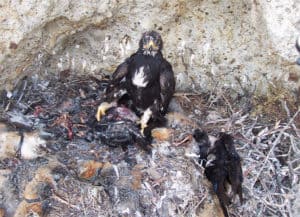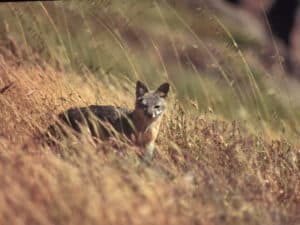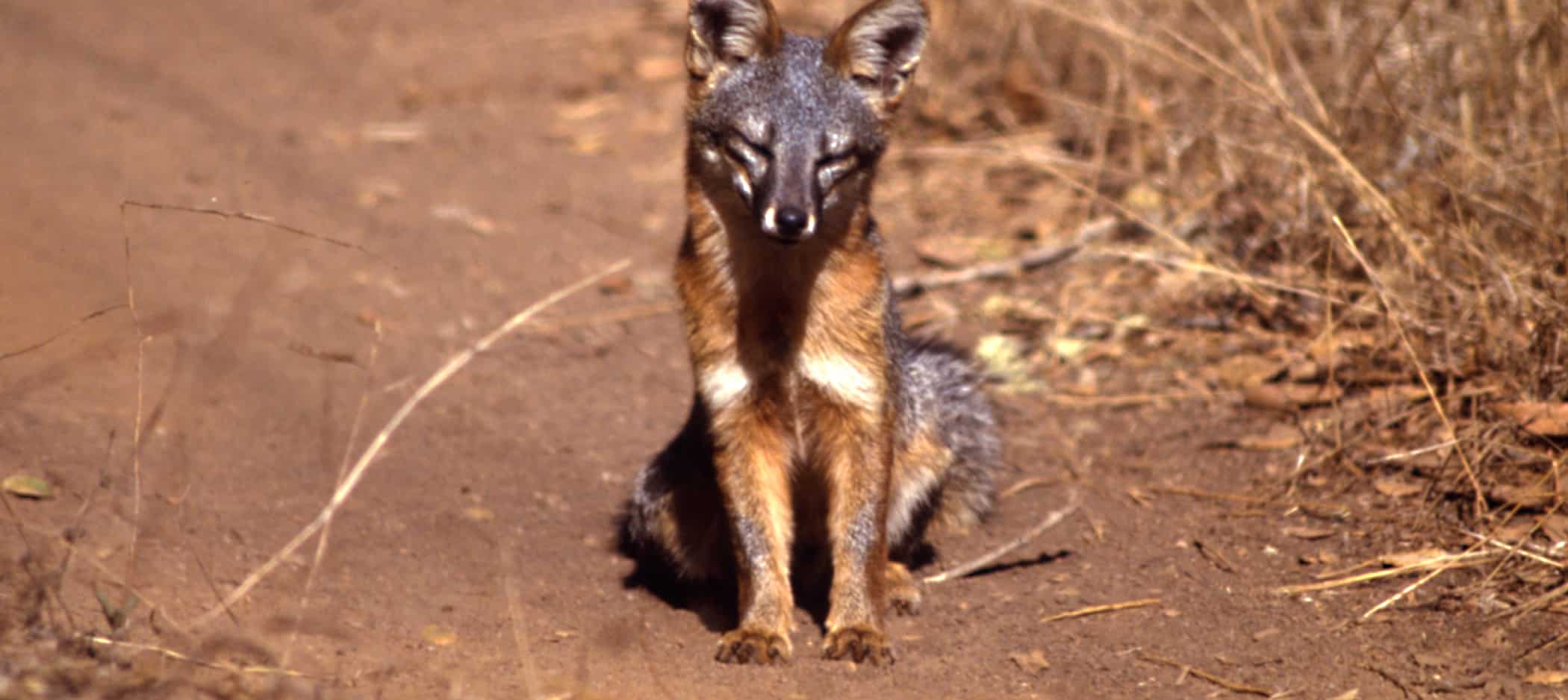Share this article
Golden eagle feathers reveal decades of island prey
An eagle feather may be light in weight, but it can pack enough isotopic data to reveal the changing patterns of prey availability across a landscape.
Researchers used stable isotopes found in golden eagle (Aquila chrysaetos) feathers to track the change of prey abundance going back several decades in Southern California’s Channel Islands.
“We’re always trying to find tools in order for us to find mechanisms that drive changes in ecological communities,” said Gary Roemer, a professor of conservation ecology at New Mexico State University and the lead author of a study recently published in Ibis.
Off the coast of Southern California near Los Angeles and Santa Barbara, the Channel Islands have a number of endemic wildlife species, like the Channel Islands spotted skunk (Spilogale gracilis amphiala) and the island scrub jay (Aphelocoma insulari). Evidence shows the island foxes (Urocyon littoralis) found on six of these islands are all actually distinct subspecies. Meanwhile the islands host one of the largest populations of California sea lions (Zalophus californianus), which feed in the rich waters off the coast of Southern California.
Many of these species suffered from a number of problems over the years, from invasive species such as feral pigs (Sus scrofa) and goats (Capra aegagrus hircus). Large numbers of the sea lions were found stranded along the California coast, possibly due to mercury consumption, and the use of pesticides such as DDT wiped out the local population of bald eagles (Haliaeetus leucocephalus) and peregrine falcons (Falco peregrinus) in the 1950s.

A baby golden eagle appears in a nest surrounded by the remains of Channel Island foxes. ©Peter Sharpe
Golden eagles, which didn’t nest on the island before the 1990s, exploited the lack of competition from other raptors and flew in, thriving on the local abundance of feral pigs. But small island foxes proved the perfect size for eagle meals and often ended up being eaten.
During this whole time, as they documented changes in the island ecosystems after feral pigs were removed from Santa Rosa and Santa Cruz islands, wildlife managers collected feathers from golden eagles they found by fox carcasses, in nests or directly from trapped birds.
They realized they had an entire timeline of golden eagle feathers, collected through all of the successive changes that occurred on the island. So they decided to analyze stable isotopes in the feathers to see if they could detect the difference in the availability of eagle prey.
Stable isotopes like carbon or nitrogen leave signatures passed on from prey to predator. They have been used in a number of studies to detect everything from effect of hunting on the past populations of northern common eider (Somateria mollissima borealis) in lake core samples to finding the origin of bat species killed by wind turbines.
In the case of golden eagles on the Channel Islands, the stable isotopes tracked a history of wildlife management. When the golden eagles moved in during the 1990s, their populations exploded thanks to an abundance of feral piglets. Incidentally, the eagles ate foxes as well and contributed to the decimation of fox numbers. Once the pigs were removed, the isotopes showed that the eagles began to feed more on seabirds and ravens on the island.
“If they have a particular prey that’s available and abundant, they’ll key in on it,” Roemer said.

Channel Island foxes are genetically distinct on each of the six islands they are found on. ©Gary Roemer
In the end, the golden eagles themselves were removed and bald eagles — which tend to favor fish and seabirds as prey and deter other raptors — were reintroduced.
Roemer said that the isotope study didn’t necessarily tell researchers anything they didn’t already know about the prey makeup on the island, but the general approach of the technique shows that it could be used in other situations where past abundance of prey isn’t well-known. He believes the technique has potential for allowing researchers a way to track changes in prey communities due to climate change or other human-caused environmental changes.
“This could be another addition to the ecologist’s toolbox to survey what ecological communities are doing over time,” Roemer said.
Header Image: Channel Island foxes, like this one on Santa Cruz Island, proved perfect prey for golden eagles. ©Gary Roemer








